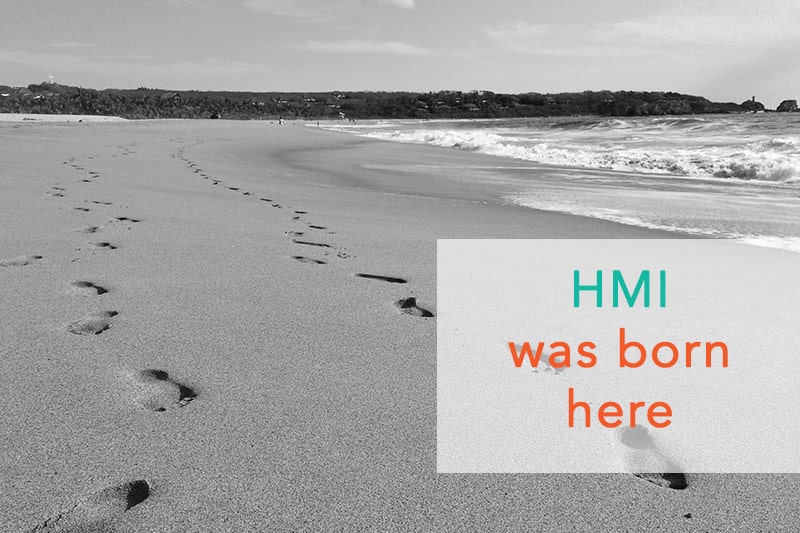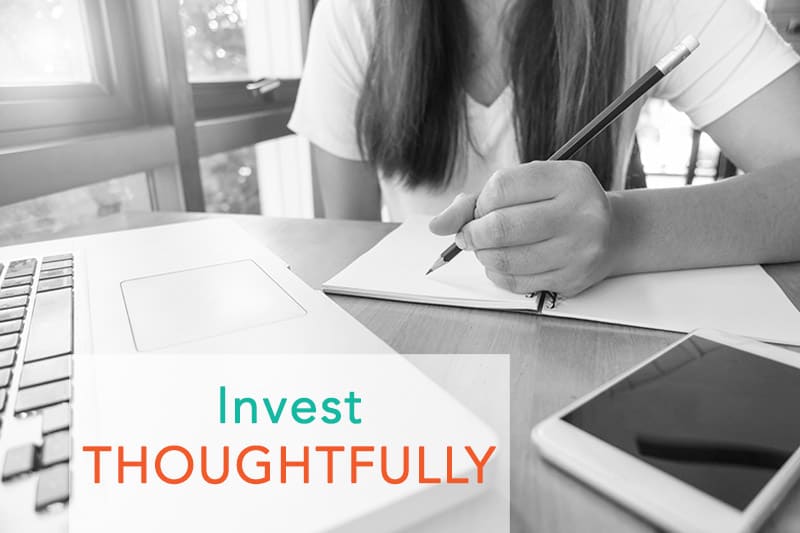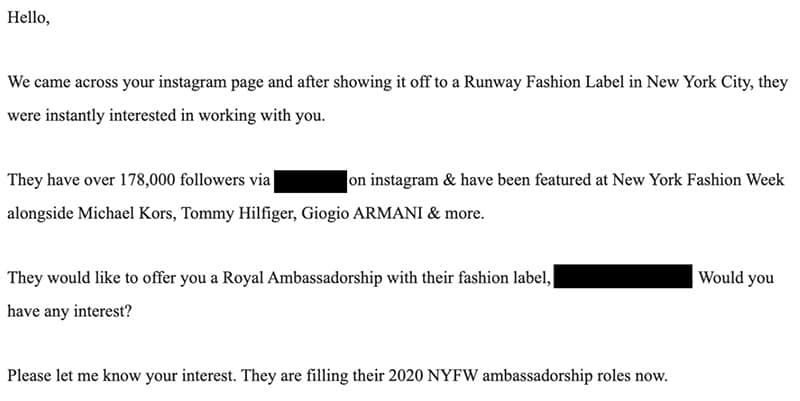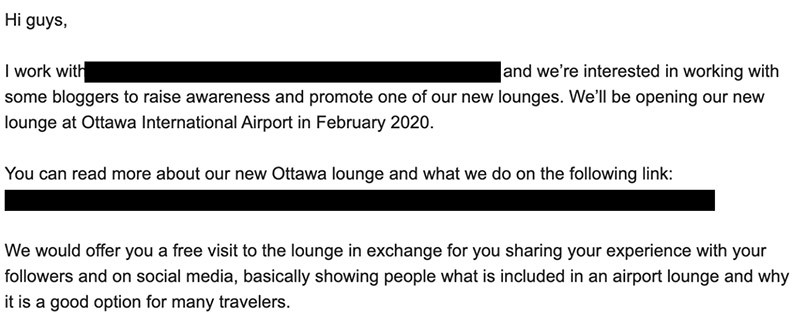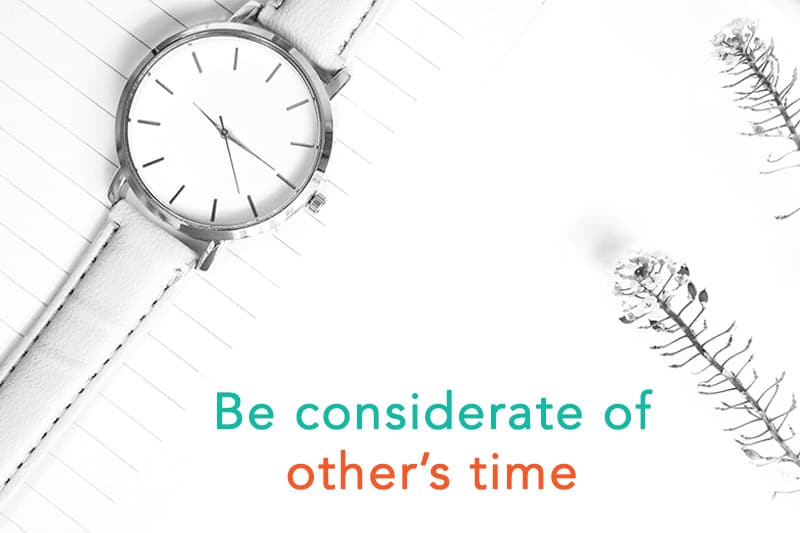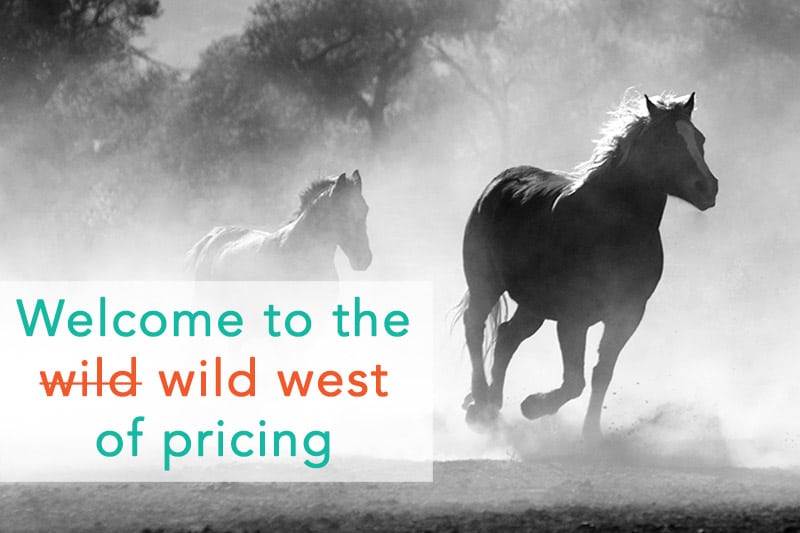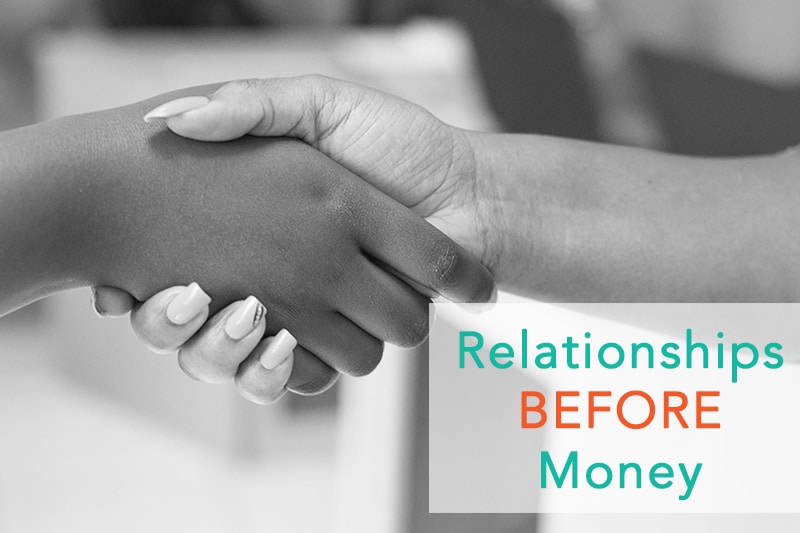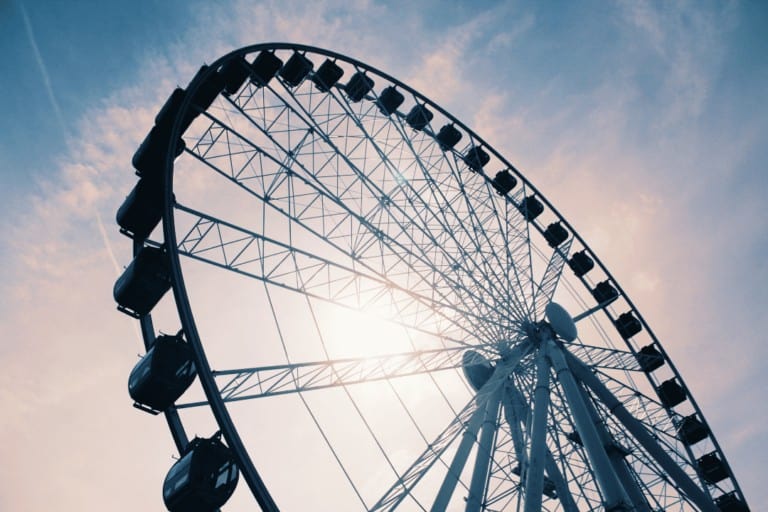6 Lessons Learned from 6 Years of HMI
By Dalene Heck
February 13th is the anniversary of the incorporation of HMI. We had been operating in this space for some time prior, but we celebrate February 13, 2014 as the beginning of all the good things.
New to HMI and what we do? Read on to discover our company history and the greatest lessons we’ve learned along the way.
*****
The idea for HMI was hatched on a Mexican beach, over six years ago.
By that time, my husband Pete and I had been traveling nomadically for 5 years. We’d also been blogging for almost as long, and to be completely honest, we were getting tired of it. It was very draining work to be out there and on all the time. Plus the money we earned was just okay – enough to keep us going, at least – but we couldn’t see a realistic path forward. We couldn’t see how Hecktic Travels would be “the thing” that fulfilled us both personally and professionally for the long term.
Both of us have nothing but respect for our travel influencer friends who have been able to make it work for them. We truly appreciate the extent of their hustle and realize how hard it is for influencers to make money. Where Pete and I got lost was in the nature of “the sell” that had to go along with it. We don’t have that in us. We wanted our online platforms to remain purely enjoyable and not become the burden they seemed to be turning into.
But.
Something else was happening around that time. We had started to make connections with travel brands, and they were starting to ask questions. Blogging and social media influencing were tipping into the mainstream, and brands wanted to know how they could find people like us to work with. How would the relationship work? What would that exchange look like? These conversations sparked something in both of us.
Because you see, Pete and I are both business nerds at our core. Before we sold it all to travel the world, he was a CMA (Certified Management Accountant, for our international friends), and I was in a management role after years of leading large procurement projects. We both have learned and intuitive business sense, and we share an intense love for colourful spreadsheets.
Something clicked. We could finally see a path forward that got us both excited. Executing influencer campaigns and managing brand social media was the perfect marriage of our newfound media skills and our business acumen. We got to work.
And here we are, 6 years later. There are now 4 of us working full-time for HMI and another 4 part-time, plus a handful of specialized contractors behind the scenes (read more about our team here). Our first two big clients (including one that we landed while in Mexico) are still with us. We’ve worked with dozens of different brands including tour companies and tourism boards and more; upwards of 90% of our clients became repeat customers. In total, we’ve paid out close to $700,000 to creators and influencers. I’ve given almost 20 speeches on influencer and content marketing. We also won a really BIG award.
It’s been a slow but steady build, held up somewhat deliberately (we still like to travel, ya know), but also a bit tragically (cancer). But now that we’re no longer nomadic and I’ve regained my full health, HMI has been on a considerable upward trajectory.
And the very best thing about all of this is: We love this work. Like, truly adore it. We love it when beautiful content is produced and when our clients become friends. We are blessed with an extraordinary team of people who are as fun to work with as they are skillful. All of our beautiful spreadsheets are like our beloved children. (You all should probably be concerned with that last admission.)
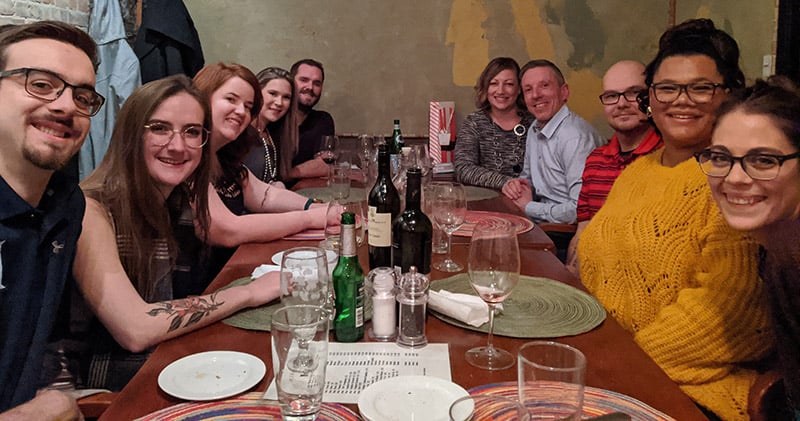
It’s been a wild ride over these last six years and the industry itself has evolved and morphed. When we started HMI, the word influencer wasn’t even floating around yet.
Brands knew that there was value in working with people “like us”, but it was new ground for everyone. To them, we presented HMI as an intermediary with a unique view to the other side. We knew what bloggers and other social media experts could offer. We knew what they wanted. We also, unfortunately, knew how some took advantage of brand naivete by falsifying their data to look more important than they actually were. HMI offered a pragmatic way to sort all of that out and give brands clear insight into how they could best achieve a return on their investment. And that is still our primary goal.
Not all of our collaborations have been highly successful, but almost all have. And with every single shred of work we’ve done – through the very good and small percentage of bad – we’ve come away having learned how to do better next time. Some of the lessons are ugly (like, do NOT work with THAT influencer again), but most are highly positive (let’s do that again but in this more efficient way).
And some of our hardest-fought lessons are worth stating loudly right here with bold headlines as advice to our brand and influencer colleagues. Because as we see it, these are the most important things that will improve us all and ensure a bright future for influencer marketing in tourism.
For brands: Invest in the right decision
The most important decision a brand can make is choosing the right influencer who can execute their vision. And that isn’t easy.
There are so many things to consider: Find an influencer who matches the brand in style and voice. Make sure their audience demographics align with the brand’s target. Do they have enough legitimate reach to make a difference? Are they already working with competitors? Are they easy to work with?
There are quite literally thousands of influencers who would be willing partners to sell your product, service, or destination, but only a small handful will actually tick all of the boxes required for the relationship to be fruitful.
Realizing those perfect potential partnerships takes a lot of work. And far too many times we’ve seen brands skip this important verification step, grabbing the first person they see who calls themselves influencer. Or we’ve seen PR representatives work with the same influencers over and over with a variety of clients – sometimes shoving square pegs into round holes and calling it a day. Not every influencer is going to align with every brand. And if a brand wants to get it right, they need to do the upfront work.
(This is the same lesson I would have written on our one-year anniversary. And our second. And our fourth. It always bears repeating and has the biggest impact on the success of any campaign. It’s also what I feel most passionate about, and I proudly call our influencer verification process HMI’s “unfair advantage”. We are really, really good at this and it’s because of our insight into both worlds. If you want to learn more about what we offer in this regard, start here.)
For influencers: Invest in basic business skills
Influencers come from all sorts of backgrounds. We know teachers-turned-influencers, website designers, a dentist, a realtor, retail personnel, bartenders, and more. Of course, we also know plenty of photographers and writers who now make their living on social media as well.
The wealth of perspectives is impressive, and is one thing that inspires us about influencer marketing – quite literally, almost anyone from any background can do it if they have some resources (time and start-up money) to spare.
We get that the early days of blogging and influencing are tough. The focus then – as it should be – is on perfecting one’s craft and creating good content. It’s hard to justify spending dollars unless some are coming back in. But we would like to strongly urge that along with allocating funds to web hosting or photography equipment or whathaveyou, that some basic business courses are also added to the to-do list.
Learn how to create a proper invoice and a basic accounting system. Get a lesson on how to understand contract language. (And then read the damn contracts, and don’t whine about the terms AFTER you’ve signed them. AHEM.) Get tips on proper business communication and negotiation. Learn how to write a business plan.
There are plenty of resources out there (probably even many for free) that can help influencers – new AND established – to get up this learning curve faster. We can guarantee that it will pay off handsomely in the future and will save all of us many frustrations. (Pete’s number one tip: PDF your invoices. Every time he gets a Word file he mumbles to himself and threatens to edit it and remove a zero just to prove a point. One day I may not be here to stop him so y’all best take his advice now.)
For both: Blind pitches are the worst
The most common complaint we hear from brands (besides the claim that influencers are generally bad at reporting), is that they get far too many untargeted pitches. At least several times a day, their inbox notification bings and something banal has landed in it. Either it is laced with several spelling errors (including the brand’s name) or simply states: “I’ve always wanted to go to X! Let me know how we can work together!”
Consider the potential success of that misspelled and generic email versus something well-researched and presented. This may be the very first assessment of you from a potential partner. What do you want their first impression to be?
Instead, write something like: “I see you have a craft brewery festival coming up in X. I write regularly about craft breweries and would love to experience this festival and present it to my audience. I can offer [This] in exchange for [That] and I believe my audience to be well-aligned with your targets. My reach numbers and demographics of my audience are attached in my media kit.” This still needs a bit of work to be more specific, obviously, but presenting even a shred of research will do wonders for your future potential.
Oh, and HELLO brands, let me give you the exact same advice by showing just a small sample of what has shown up in the Hecktic Travels inbox this past week.
We are the FARTHEST from being fashion influencers as you can get. Anyone who spends even a few seconds perusing our accounts would understand that.
Hi. We live in Alberta. We are over 3,200kms away and Ottawa is rarely (if ever) a stopover point for us.
These are just two samples of many, along with dozens of unsolicited press releases (I CANNOT for some reason get off of the mailing list for The Bradford Group – does anyone have any suggestions short of changing my email and/or maybe my name?) that are regular dead weight in my inbox. And on the far other side of these transactions are the actual brands, paying whoknowshowmuch to firms who are sending scattershot emails with a very small percentage gaining any traction.
Please take this lesson – influencers and brands – and stop wasting our collective time.
For influencers: Be original
I’m writing this at a unique moment in time where I just finished reviewing over 150 applications for a Creator House campaign we are working on. This is our fifth Creator House project, and I am so proud to say that this is the best slate of creators we’ve had to choose from. Our “top” shortlist had almost 40 influencers on it. Our backup (or “maybe” list) had almost 50. That means roughly 60% of the interested creators are contenders. That is unheard of. People really stepped it up this time.
But I have to be honest – going through the list was still a mind-numbing and sometimes eye-rolling task. One question we ask of influencers, for every campaign we work on, is: “What makes you stand out online?” And nothing frustrates me more than seeing this repeated response: ”I want to inspire people to travel.” No word of a lie – on one recent campaign we were recruiting for, that statement was in a third of the responses.
THAT IS NOT WHAT MAKES YOU STAND OUT. In fact, that makes you just like everyone else. And because everyone and their dog fancies themselves travel influencers these days, standing out is even MORE important. Take a note from the lady who answered this question by starting with: “If Drake and Anthony Bourdain had a daughter, it’d be me!” Step up with some originality, or if not, then step out of the way. Double down on your niche and state it loud and clear. Stop clogging my beautiful spreadsheets with monotonous clichés.
For both: Be reasonable when it comes to expectations and pricing
A couple of years ago, I would have said we are still in the wild, wild west when it comes to pricing for influencer projects. Today, I’ll remove one wild – it’s just the wild west of pricing. As a whole, we’ve made some strides to come to a sensible place, but we still have a ways to go.
One thing I’ll say first: I believe that worthy talent should be paid. We’ve had some brands approach us looking for our help to unreasonably milk content creators, and we’ve always turned that business down.
But there is one other thing I have to say too: Just because you create content and put it on the internet, that doesn’t mean you automatically deserve to be paid. You need to demonstrate you can produce good and relevant content. You have to have a legitimate audience to receive it. There is a bevy of other things to be considered in the decision of to pay or not to pay, that’s for sure, but every new influencer who screams that they “don’t work for free” needs to give it substantially more thought.
Especially considering the value that is offered in the travel industry. What is on the table is often of high-value: multiple-night hotel stays, tours, or even all-expense-paid trips. This is not nothing. You can bet that a destination or other travel brand needs to consider their internal cost outlay before even considering a fee on top of that. The value of an influencer offer has to be justifiable. Budgets are real.
All of that is to say that everyone needs to consider everything with a dose of reality. Is an influencer going to produce 3 Instagram posts, 2 blog posts, and 5 tweets, in exchange for a one-night hotel stay? Probably not. Is a tour company going to invite an influencer on a week-long trip and pay $10,000 if they are only going to get 3 sponsored Instagram posts out of it? No matter what the size of the Instagrammer’s audience, I would advise the tour company to reconsider this expensive project with short-lived benefit.
So, what is reasonable?
There are far too many variables involved to list definitive rates. But I can provide some comments based on what we’ve seen lately.
- If a creator or influencer – no matter their audience size – sees enough value in a trip or product or service, they may promote it without a fee. That “value” can include how desirable it is to them personally, if they are trying to build a relationship with the brand, how eager they are to present the resulting content to their audience, and/or how they may be able to monetize the content in other ways. Be very wary though, of approaching influencers with whom you have no relationship with, and asking them to do anything for no fee. Many will be insulted, and you will have immediately started off on the wrong foot.
- On a per follower cost basis, according to our current data, micro-influencers (those with more than 10,000 but less than 100,000 followers) provide equitable value compared to macro-influencers (those with more than 100,000 followers). However, this does not take into account that deliverables and engagement among micro-influencers are typically better. Also consider that follower accounts are usually not what they seem.
- The general expectation we have for deliverables in consideration of a few day travel-based campaign is that the influencer will provide, at minimum, social coverage for every day of the trip (i.e. 1 Instagram post/day, 1 Facebook post/day, etc.) and one blog or vlog for the entire trip. Often, photos and/or videos for the brand’s use beyond the campaign may be included. All of this can vary by trip length and influencer and is always negotiable, but is a reasonable base to start from.
- European influencers definitely charge more than North American.
Remember that it all can vary and change quickly. New channels spring up. Algorithms are tweaked constantly and can push the perceived value of one network ahead of another. Blog posts may be worth less since the “Bedlam” Google update that caused a dive in traffic for many last year. As always, we recommend that influencers invest their efforts into more than one network in order to offer brands more options, but also in the interest of their own relevance and longevity.
And most importantly, what is clear to us, after many years of doing this, is that the travel industry is very personal. Those who focus on building strong relationships first (BEFORE talking about wild west money), will be those who endure in the long run.
For both: Be that person everyone wants to work with.
Good behaviour is well rewarded.
For influencers…Be that person who is professional AF and also regularly over-delivers. Read everything provided. Don’t get grossly drunk on a press trip. Be on time. Don’t make us handhold you through every step of a campaign. Provide results, even if they aren’t asked for.
For brands…Be upfront and honest. Give relevant information as soon as possible (i.e. please don’t hold trip itineraries until two days before). DON’T GHOST PEOPLE.
There are don’t-work-with-these-people lists on BOTH sides of the business. We see them. We know who’s on there. These lists get shared. We have our own.
I hate that all of this has to be said, but it really does. Remember that bad behaviour is what gets remembered most, and what we diligently work to avoid. A diva attitude or even a whiff of shady practices can cause us to turn a partnership down. And I know we’re not alone in being that strict.
In Conclusion
Clearly, none of these lessons are groundbreaking. But they are important and are issues that I see halting some from successfully progressing. Whether it’s annoyance at the repeated receipt of bad press releases or a proposal with outlandish fee expectations, I think that people forget that this is an industry that often works on relationships. Of course, results are crucial, but those are best achieved when an influencer and brand connect well with each other. And in this perpetually online world, that rapport likely even starts before anyone ever meets.
It not only took us six years to get this far with HMI, but also the many before spent building our knowledge and reputation in this industry as bloggers. Looking back, sure, we’ve made mistakes and missteps like everyone has, but not once have I looked at anything we’ve done as a failure. All were learning experiences. All were stepping stones to something better. We do our best to be as professional AF and provide our services at reasonable prices.
I’m so incredibly grateful to the brands, influencers, and loyal members of our team who have taken a chance on us. No one gets this far alone, especially considering some of the precipitous hits we’ve taken in that time. But we’ve had steadfast support in our corner, some from the very beginning, which makes us even more eager to be of exceptional service.
From this vantage point, the next six years look just as luminous as the past. (And I can’t wait!)
You may also want to read:
How to Plan the Perfect Influencer Trip
How Do Influencers Make Money?
11 Creative Ways to Work With Influencers: Going Beyond the Press Trip


